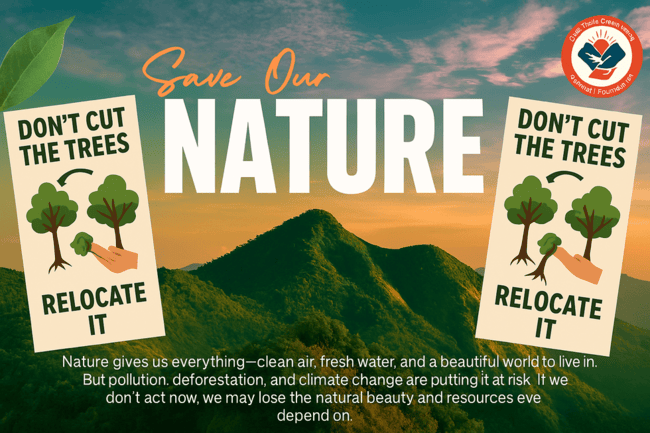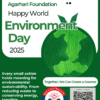
In an era marked by rapid urban expansion and relentless infrastructure development, cities and communities face a formidable challenge: how to modernize while preserving the natural environment. Traditional methods of clearing land for roads, bridges, and buildings have typically involved cutting down trees, resulting in loss of biodiversity, increased carbon emissions, and diminished urban greenery. Today, a transformative approach is gaining traction—relocating trees instead of felling them—to achieve development without environmental destruction.
Rethinking Traditional Development
Historically, infrastructure projects have depended on the felling of trees to make way for new construction. While this approach often provided a quick solution to space constraints, it has led to significant environmental degradation. Deforestation disrupts local ecosystems, contributes to climate change, and robs communities of the numerous benefits that trees offer, such as air purification, shade, and improved mental health. The growing awareness of these consequences has fueled a shift toward more sustainable practices.
Tree relocation offers a viable alternative. This process involves carefully uprooting trees and transplanting them to suitable sites where they can continue to thrive. Modern horticultural techniques and specialized machinery now enable the safe transfer of even mature trees, ensuring that the ecological and social benefits of urban forests are preserved.
The Benefits of Tree Relocation
Environmental Preservation:
Relocating trees maintains the natural habitat that supports diverse flora and fauna. Trees act as vital carbon sinks, absorb pollutants, and moderate urban temperatures. By relocating rather than cutting them down, developers preserve these essential functions, contributing to cleaner air and a healthier ecosystem.
Social and Aesthetic Advantages:
Green spaces have a profound impact on community well-being. Parks and tree-lined streets improve mental health, reduce stress, and create inviting urban environments. By saving mature trees, cities retain their character and offer residents the benefits of nature right at their doorstep.
Economic and Long-Term Gains:
While the initial cost of tree relocation can be higher than traditional clearing, the long-term benefits often outweigh these expenses. Preserved trees can boost property values, attract tourism, and reduce energy costs by naturally cooling urban areas. Moreover, sustainable development practices can lead to governmental incentives and community support, ultimately making tree relocation a cost-effective strategy over time.
Technical and Logistical Considerations
Implementing tree relocation involves several steps and careful planning. Experts begin with a thorough assessment to determine whether a tree is suitable for transplanting, considering its species, age, and overall health. The process typically involves the following steps:
- Assessment and Planning:
Arborists evaluate the tree’s structure, root system, and the soil conditions of both the current site and the intended new location. Detailed plans ensure that the tree’s needs are met in its new environment. - Preparation:
The tree’s root ball is carefully excavated, often using specialized equipment that minimizes damage. During this phase, extra precautions are taken to retain as much of the tree’s root system as possible. - Transplanting:
Once excavated, the tree is moved to its new location, where a prepared site with appropriate soil and nutrients awaits. The tree is then re-planted and staked for stability. - Aftercare:
Post-transplant care is crucial. Regular watering, mulching, and monitoring help the tree establish itself in the new location. Experts may also use growth stimulants or fertilizers to support recovery.
Though technically demanding, advances in equipment and practices have increased the survival rate of transplanted trees, making this method a reliable component of modern infrastructure projects.
Successful Examples and Global Trends
Across the globe, several municipalities have embraced tree relocation as part of sustainable development initiatives. For instance, some cities have implemented policies that require developers to conduct environmental impact assessments and explore relocation options before approving projects. These initiatives not only protect local ecosystems but also serve as a model for other regions facing similar challenges.
In countries where urban density and historical greenery coexist, tree relocation has allowed developers to preserve iconic trees that contribute to a city’s identity. This approach can be particularly effective in areas with heritage trees or urban forests that hold cultural significance, ensuring that development does not erase community landmarks.
Overcoming Challenges
Despite its benefits, tree relocation is not without challenges. The process can be labor-intensive and expensive, and not all trees are suitable candidates for transplanting. Factors such as soil type, tree species, and climate conditions play a critical role in the success of relocation efforts. Furthermore, inadequate aftercare or improper planning can lead to high mortality rates among transplanted trees.
To overcome these hurdles, collaboration among developers, urban planners, environmental experts, and local communities is essential. Investment in research and training can further refine relocation techniques, making the process more efficient and cost-effective. Governments and private sectors alike must recognize the long-term benefits of sustainable practices and adjust budgets and policies to support tree relocation projects.
A Vision for Sustainable Infrastructure
The movement toward “development without destruction” represents a broader rethinking of progress—one that values sustainability and environmental stewardship. By prioritizing tree relocation, societies can build modern infrastructure without sacrificing the natural world. This approach not only mitigates the immediate impacts of construction but also contributes to a healthier, more resilient urban environment for future generations.
In conclusion, as cities continue to grow and evolve, integrating nature into urban design is paramount. Tree relocation stands as a powerful testament to the possibility of harmonious coexistence between development and the environment. Through innovative planning, dedicated aftercare, and community involvement, we can ensure that progress does not come at the expense of our planet’s precious green heritage.





